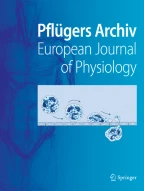Abstract.
The purpose of this study was to examine the extent to which lighter runners might be more advantaged than larger, heavier runners during prolonged running in warm humid conditions. Sixteen highly trained runners with a range of body masses (55–90 kg) ran on a motorised treadmill on three separate occasions at 15, 25 or 35°C, 60% relative humidity and 15 km·h–1 wind speed. The protocol consisted of a 30-min run at 70% peak treadmill running speed (sub-max) followed by a self-paced 8-km performance run. At the end of the sub-max and 8-km run, rectal temperature was higher at 35°C (39.5±0.4°C, P<0.05) compared with 15°C (38.6±0.4°C) and 25°C (39.1±0.4°C) conditions. Time to complete the 8-km run at 35°C was 30.4±2.9 min (P<0.05) compared with 27.0±1.5 min at 15°C and 27.4±1.5 min at 25°C. Heat storage determined from rectal and mean skin temperatures was positively correlated with body mass (r=0.74, P<0.0008) at 35°C but only moderately correlated at 25°C (r=0.50, P<0.04), whereas no correlation was evident at 15°C. Potential evaporation estimated from sweat rates was positively associated with body mass (r=0.71, P<0.002) at 35°C. In addition, the decreased rate of heat production and mean running speed during the 8-km performance run were significantly correlated with body mass (r=–0.61, P<0.02 and r=–0.77, P<0.0004, respectively). It is concluded that, compared to heavier runners, those with a lower body mass have a distinct thermal advantage when running in conditions in which heat-dissipation mechanisms are at their limit. Lighter runners produce and store less heat at the same running speed; hence they can run faster or further before reaching a limiting rectal temperature.
Similar content being viewed by others
Author information
Authors and Affiliations
Additional information
Received after revision: 26 July 2000
Electronic Publication
Rights and permissions
About this article
Cite this article
Marino, F., Mbambo, Z., Kortekaas, E. et al. Advantages of smaller body mass during distance running in warm, humid environments. Pflügers Arch - Eur J Physiol 441, 359–367 (2000). https://doi.org/10.1007/s004240000432
Received:
Accepted:
Issue Date:
DOI: https://doi.org/10.1007/s004240000432
